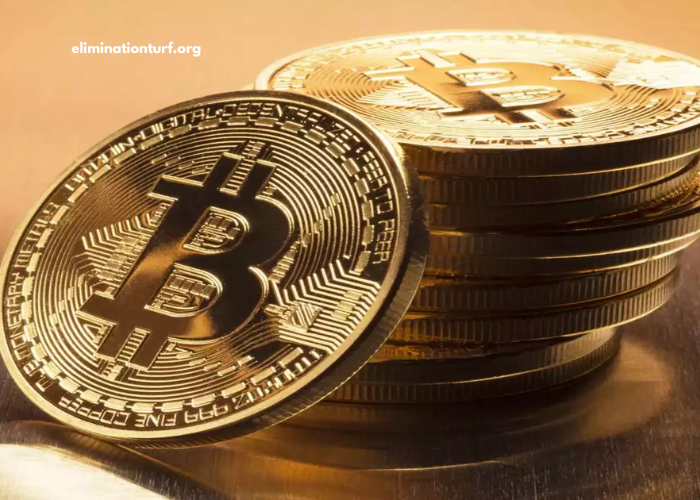Blockchain technology and digital currency have revolutionized the global financial landscape. From Bitcoin’s inception in 2009 to the emergence of central bank digital currencies (CBDCs), these technologies continue to shape the future of finance, security, and decentralized transactions. As blockchain adoption accelerates, it is crucial to explore its potential applications and implications for businesses, governments, and individuals worldwide.
Understanding Blockchain Technology
What is Blockchain?
Blockchain is a decentralized, distributed ledger technology that records transactions across multiple nodes, ensuring transparency, security, and immutability. Unlike traditional centralized systems, blockchain eliminates the need for intermediaries, reducing costs and enhancing efficiency.
How Blockchain Works
A blockchain network comprises blocks of data linked in chronological order. Each block contains transaction data, a timestamp, and a cryptographic hash of the previous block, making it tamper-proof. Consensus mechanisms like Proof of Work (PoW) and Proof of Stake (PoS) validate transactions, ensuring data integrity and security.
Evolution of Digital Currency
From Barter to Digital Assets
The concept of money has evolved from barter systems to coins, paper currency, electronic payments, and now digital assets. Cryptocurrencies like Bitcoin, Ethereum, and stablecoins have gained traction, challenging traditional financial systems.
Role of Cryptocurrencies
Cryptocurrencies offer borderless, decentralized, and fast transactions, reducing reliance on banks and financial institutions. They operate on blockchain networks, ensuring security and transparency. With increasing adoption, cryptocurrencies have become an alternative investment class, attracting institutional and retail investors alike.
The Future of Blockchain and Digital Currency
Decentralized Finance (DeFi)
Decentralized Finance (DeFi) is disrupting traditional banking by providing open, permissionless financial services such as lending, borrowing, and trading. DeFi platforms use smart contracts to automate transactions, eliminating intermediaries and reducing costs. As DeFi matures, its integration with traditional finance could redefine the banking sector.
Central Bank Digital Currencies (CBDCs)
Governments and central banks worldwide are exploring the implementation of CBDCs to enhance financial inclusion and payment efficiency. Unlike cryptocurrencies, CBDCs are state-backed digital currencies that combine the benefits of digital transactions with regulatory oversight. Countries like China, the EU, and the US are actively researching and piloting CBDC projects.
Blockchain in Supply Chain Management
Beyond finance, blockchain is transforming supply chain management by enhancing transparency, reducing fraud, and improving traceability. Companies like IBM and Walmart leverage blockchain to track products from production to delivery, ensuring authenticity and quality control.
Smart Contracts and Automation
Smart contracts are self-executing contracts with pre-defined conditions coded on the blockchain. These contracts eliminate the need for intermediaries in legal agreements, real estate transactions, and business deals, reducing time and costs while enhancing security.
Non-Fungible Tokens (NFTs) and Digital Assets
NFTs have revolutionized the digital art, gaming, and entertainment industries by providing unique, verifiable ownership of digital assets. With growing adoption, NFTs could extend to identity verification, intellectual property rights, and real-world asset tokenization.
Blockchain and Privacy Enhancements
Privacy-focused blockchain solutions like Zero-Knowledge Proofs (ZKP) and private blockchains ensure confidentiality while maintaining transparency. These advancements will be critical for regulatory compliance and enterprise adoption in industries like healthcare and finance.
Challenges and Considerations
Regulatory Uncertainty
Blockchain and digital currency regulations vary across countries, creating uncertainty for businesses and investors. Governments are working on frameworks to balance innovation with consumer protection and financial stability.
Scalability Issues
Blockchain networks like Bitcoin and Ethereum face scalability challenges, leading to slow transactions and high fees. Layer-2 solutions, such as the Lightning Network and Ethereum 2.0, aim to improve scalability and efficiency.
Security Threats
While blockchain is secure, vulnerabilities like smart contract bugs, hacking, and phishing attacks pose risks. Implementing robust security measures and continuous auditing is crucial for mitigating these threats.
Environmental Concerns
Proof of Work (PoW) blockchains consume significant energy, raising environmental concerns. Transitioning to Proof of Stake (PoS) and eco-friendly consensus mechanisms can help address sustainability challenges.
Conclusion
The future of blockchain and digital currency is promising, with advancements in decentralized finance, smart contracts, NFTs, and CBDCs driving global adoption. Despite regulatory and technical challenges, continuous innovation and collaboration will shape a more inclusive, efficient, and secure financial ecosystem. As blockchain technology evolves, businesses and individuals must stay informed and embrace its transformative potential.

